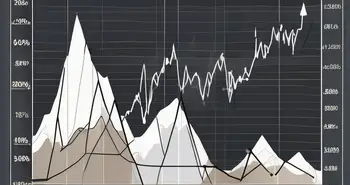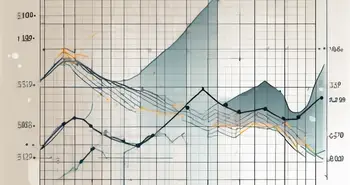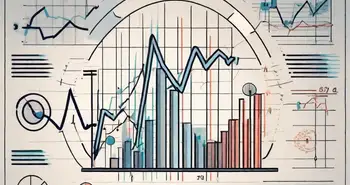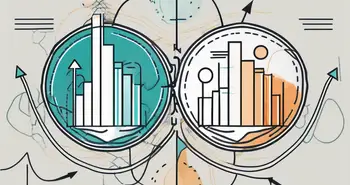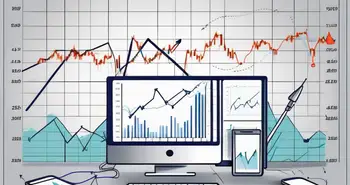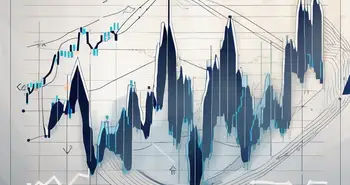High Frequency Trading: Unveiling the World of Rapid Trades and Their Impact on the Market

Welcome to the captivating world of high frequency trading (HFT), where markets move at lightning speed and fortunes are made in the blink of an eye. As an expert in the field, I am excited to share with you a comprehensive guide that demystifies the intricacies of HFT and sheds light on its profound impact on the market.
Understanding High Frequency Trading
Before delving into the mechanics of rapid trades, it is essential to grasp the basics of high frequency trading. At its core, HFT is a sophisticated trading strategy that leverages advanced technological infrastructure to execute a large number of trades within fractions of a second.
The Basics of High Frequency Trading
HFT relies on intricate algorithms that analyze vast amounts of market data in real-time. This enables traders to exploit fleeting price discrepancies, capitalize on market inefficiencies, and generate substantial profits. The speed and precision at which these trades are executed give HFT a unique edge in the financial markets.
Key Players in High Frequency Trading
In the realm of HFT, major players include hedge funds, proprietary trading firms, and large financial institutions. These entities invest heavily in cutting-edge technology, such as high-performance computing systems and ultra-low latency networks, to gain a competitive advantage in the market.
The Technology Behind High Frequency Trading
The technology powering HFT is at the heart of its lightning-fast execution. From co-locating servers near exchanges to utilizing microwave and laser communication links, HFT firms spare no expense in their quest for speed. These technological advancements enable traders to execute trades with incredible efficiency and accuracy.
The Mechanics of Rapid Trades
Now that we have laid the groundwork, let's explore the intricate mechanics of rapid trades. Central to HFT is the utilization of complex algorithms that drive the decision-making process and execute trades with astonishing speed.
The Role of Algorithms in Rapid Trades
Algorithms are the secret sauce of HFT. These complex mathematical formulas analyze real-time market data, identify patterns, and provide traders with valuable insights. By automating the trading process, algorithms eliminate human emotions and biases, ensuring lightning-fast and disciplined execution.
Speed and Efficiency in High Frequency Trading
Speed is the lifeblood of HFT. To gain a competitive advantage, HFT firms employ cutting-edge technology and infrastructure that minimize latency, ensuring rapid execution and superior market access. Every microsecond counts, as even the smallest time advantage can translate into substantial profits.
Risk Management in Rapid Trades
Despite the allure of rapid profits, HFT is not without risks. HFT firms implement sophisticated risk management strategies to mitigate potential pitfalls. These include real-time monitoring, dynamic position sizing, and highly sophisticated risk control systems, all designed to protect against sudden market fluctuations.
Impact of High Frequency Trading on the Market
Now that we have explored the inner workings of HFT, let's turn our attention to its profound impact on the market as a whole. HFT has revolutionized the dynamics of modern financial markets, introducing both benefits and challenges.
Influence on Market Volatility
HFT has been a catalyst for increased market volatility. Rapid-fire trades can magnify fluctuations in prices, leading to sharp market swings. Critics argue that this can create instability and amplify market crashes. Proponents, on the other hand, contend that HFT enhances market efficiency and liquidity.
High Frequency Trading and Market Liquidity
One undeniable benefit of HFT is its impact on market liquidity. By continuously buying and selling securities, HFT firms increase market liquidity, allowing for easier and faster execution of trades. This benefits all market participants by reducing bid-ask spreads and enhancing price discovery.
The Effect on Traditional Trading Methods
HFT has reshaped the landscape of traditional trading methods. The once-dominant floor traders have been largely replaced by algorithms and high-speed computers. Traditional strategies that relied on slower execution speeds and human decision-making now find themselves competing against the lightning-fast world of HFT.
Regulatory Concerns and Ethical Implications
As with any disruptive innovation, HFT has sparked a heated debate surrounding its regulatory concerns and ethical implications.
The Debate Around High Frequency Trading
Regulators and market participants grapple with the challenge of balancing innovation and stability. Proponents argue that HFT enhances market efficiency and liquidity, while critics raise concerns about unfair advantages, market abuse, and potential systemic risks. Striking the right balance is key to ensuring a fair and transparent marketplace.
Regulatory Measures in Different Countries
Regulatory bodies across the globe have implemented measures to mitigate risks associated with HFT. Some countries have introduced stricter registration requirements and increased surveillance, aiming to foster greater transparency and prevent market manipulation. These regulatory efforts aim to create a level playing field for all market participants.
Ethical Considerations in High Frequency Trading
The ethical dimensions of HFT are complex and multifaceted. Ethical concerns arise from potential market abuse, unfair advantages, and the role of algorithms in decision-making. Adherence to ethical standards and robust oversight is crucial in ensuring the integrity and trustworthiness of the financial markets.
Expert Advice: Navigating the World of High Frequency Trading
Having spent years immersed in the world of high frequency trading, I am often asked for advice on how to navigate this fast-paced environment. My top recommendation is to stay informed and constantly adapt. The financial markets are ever-evolving, and it is essential to stay abreast of technological advancements, regulatory changes, and market trends.
Additionally, I encourage you to cultivate a strong foundation in risk management. The rapid pace of HFT demands robust risk controls and a disciplined approach. Finally, never underestimate the power of networking. The HFT community is tight-knit, and connections can open doors to valuable insights and opportunities.
Frequently Asked Questions
What is high frequency trading?
High frequency trading (HFT) is a trading strategy that leverages advanced technology to execute a large number of trades within fractions of a second. It relies on complex algorithms, cutting-edge infrastructure, and ultra-low latency networks to gain an edge in the market.
How does HFT impact market volatility?
HFT can impact market volatility by magnifying price fluctuations. Rapid trades executed by HFT firms can lead to sharp market swings. However, proponents argue that HFT enhances market efficiency and liquidity.
What are the regulatory concerns surrounding HFT?
Regulatory concerns surrounding HFT include unfair advantages, potential market abuse, and systemic risks. Regulatory bodies have implemented measures to foster transparency, prevent market manipulation, and ensure a level playing field for all market participants.
What are the ethical considerations in HFT?
The ethical considerations in HFT revolve around market abuse, unfair advantages, and the role of algorithms in decision-making. Adherence to ethical standards and robust oversight are crucial for maintaining the integrity and trustworthiness of the financial markets.
With this comprehensive guide, you now possess a deep understanding of high frequency trading and its impact on the market. Stay informed, adapt, and approach the world of rapid trades with caution and expertise. Happy trading!
As you embrace the world of high frequency trading and its dynamic impact on the market, consider taking your trading journey to the next level with Morpher. This revolutionary platform transcends traditional boundaries by offering zero fees, infinite liquidity, and the ability to trade a vast array of assets on the blockchain. Whether you're interested in fractional investing, short selling without interest fees, or leveraging up to 10x, Morpher caters to your trading needs with safety and control at the forefront. Experience the future of trading with Virtual Futures and a unique, user-centric approach. Sign Up and Get Your Free Sign Up Bonus today, and join the Morpher community in democratizing trading across the globe.

Disclaimer: All investments involve risk, and the past performance of a security, industry, sector, market, financial product, trading strategy, or individual’s trading does not guarantee future results or returns. Investors are fully responsible for any investment decisions they make. Such decisions should be based solely on an evaluation of their financial circumstances, investment objectives, risk tolerance, and liquidity needs. This post does not constitute investment advice.

Painless trading for everyone
Hundreds of markets all in one place - Apple, Bitcoin, Gold, Watches, NFTs, Sneakers and so much more.

Painless trading for everyone
Hundreds of markets all in one place - Apple, Bitcoin, Gold, Watches, NFTs, Sneakers and so much more.

